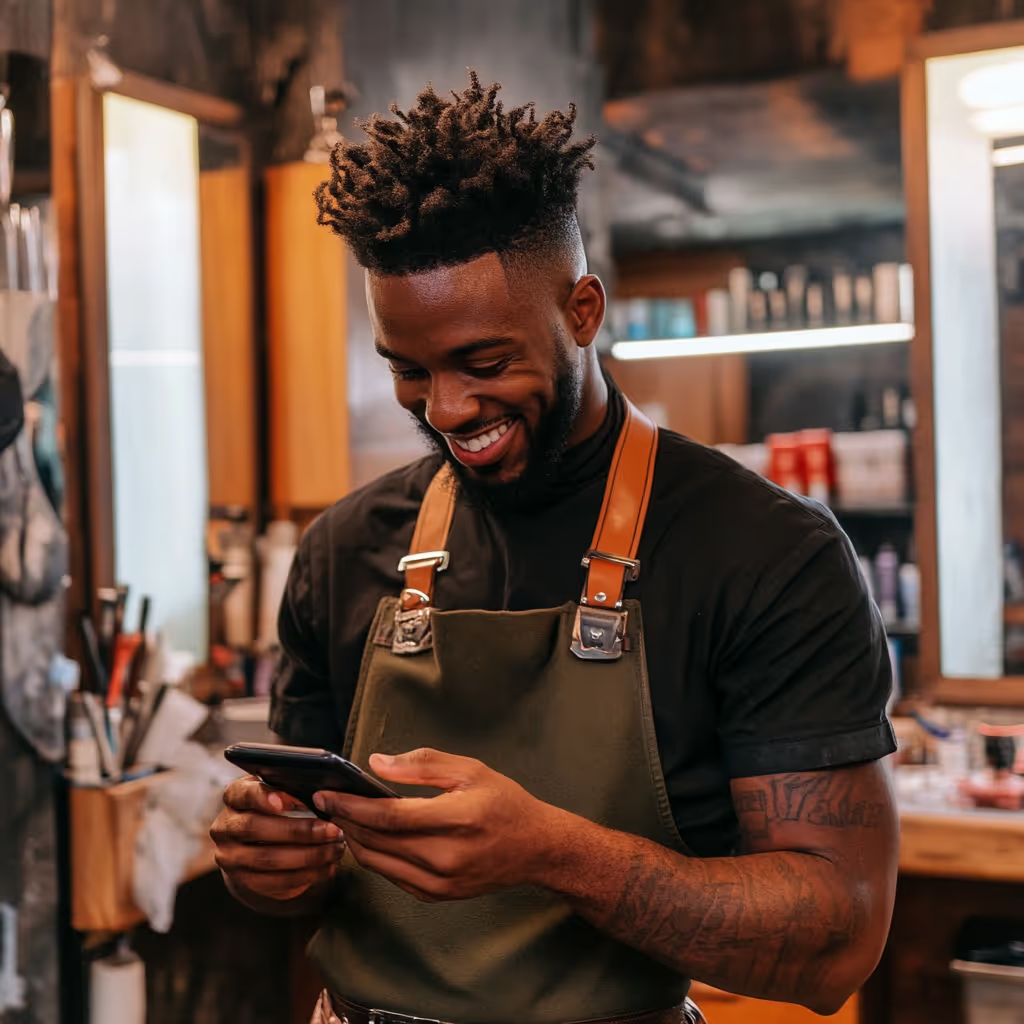Is Remote Work Keeping You From Being Booked and Busy?
The movement and activity of city centers have long been the lifeblood of urban life. Whether you're from a city or not, it's been commonplace to know city centers as a noisy mix of white-collar professionals hustling and bustling to meetings, baristas and sandwich shops caffeinating and feeding patrons, delivery people and couriers delivering packages, and barber shops filled with people on their way to work or on their way out for the night. But as the lingering effects of the pandemic and remote and hybrid work continue to unfold, fewer and fewer people are making the daily treks into the heart of their cities. This drop in foot traffic has rippled across various sectors, significantly reducing commuter traffic and the revenues of the businesses that rely on it. This impact extends to barbershops as well.
POST-PANDEMIC FOOT TRAFFIC
Most U.S. cities are struggling to return to their pre-covid levels of downtown foot traffic. The country's busiest cities have seen reductions of almost 50% since 2020. New York City, Los Angeles, Miami, Atlanta, and Chicago are at 67%, 63%, 63%, 56%, and 52%, respectively, of their pre-pandemic levels of foot traffic. Cities like San Francisco, St. Louis, and Cleveland rank as some of the most brutally hit at 32%, 38%, and 36%, respectively.
Only a few cities have had the luxury of realizing higher levels of foot traffic than pre-pandemic. Namely, Bakersfield, California, Fresno, California, and El Paso, Texas, are up 118%, 115%, and 107% of their pre-pandemic levels as of February 2023.
REMOTE WORK VS. EVERYTHING
We're witnessing a demographic shift. As remote work offers flexibility in job location, many individuals are seizing the opportunity to move out of cities to states or areas with a lower cost of living. Why pay premium city rent when you can enjoy spacious living in the suburbs or even the rurality of the country while still holding down the same job? This migration isn't just a theoretical projection; it's happening in real-time, causing city centers to lose some of their density.
It's more than just employees who are rethinking their location strategy. Companies themselves are undergoing a pivotal transformation. Some are downsizing their extravagant downtown offices, while others are relocating their headquarters entirely to places where real estate is cheaper and the quality of life is perceived to be better. This has further intensified the decreasing foot traffic in downtown areas. No longer are these areas solely viewed as the meccas of commerce; they are evolving, adapting to a world where the word "office" has a broader definition.
THE RETURN TO THE OFFICE?
With every action, there is an opposite reaction. After gauging productivity and team dynamics, several companies have employed tactics that range from gentle nudges to direct mandates for their employees to return, at least partly, to the physical office. These firms believe in the community that an office environment offers — those random coffee break conversations that sometimes lead to groundbreaking ideas. For them, the allure of face-to-face interaction outweighs the benefits of a fully remote setup.
However, as they do this, they're also met with a new reality: the need for expansive office spaces seems to be diminishing. The hybrid model, where employees split their time between home and office, allows businesses to maintain smaller office footprints. This is where things get interesting for city landscapes.
Some visionaries argue that these spaces could be converted into housing units. This move might help mitigate the housing crises plaguing many cities. Imagine an old bank headquarters turned into a chic apartment complex or the offices of a former law firm converted into a co-living space. In recent years, there has been a 43% jump in office buildings being converted to apartments. This not only breathes new life into city centers but does so in a way that fosters community, inclusivity, and innovation. Not to mention foot traffic which translates into walk-in business for a small business such as a barbershop.
MAXIMIZE YOUR VISIBILITY, DRIVE DEMAND FOR YOU
What does this mean for you as a barber? Fear not. Customers will always need haircuts and a barber. As a barber or barbershop owner working in the city, you’ve got to seriously consider maximizing your visibility. Decreased foot traffic translates to fewer walk-ins. To counter the impact of this, you’ll want to increase the likelihood of you or your shop being seen. theCut is your go-to solution for this scenario. Last month there were over 1.5M searches for barbers on theCut versus 1.3M on Google. On average, barbers on theCut get at least two new clients per month. With theCut, you build your digital booth by showcasing your portfolio of cuts and services. Then potential customers from all over the nation can discover your profile and shop which will increase your reach and reduce your reliance on being at a high-visibility shop and the need to rely on foot traffic to grow your business.
SOURCE:
https://downtownrecovery.com/charts/rankings




